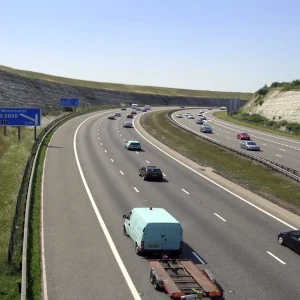
The rise of connected vehicles has revolutionised the automotive industry, introducing a plethora of benefits from enhanced navigation to improved fleet management. However, as vans and light commercial vehicles (LCVs) in the UK increasingly integrate with digital technologies, they become susceptible to cyber threats. The intersection of cyber insecurity and the van and LCV market has become a critical issue that demands attention from manufacturers, fleet operators, and policymakers alike.
Understanding the Scope of Cyber Insecurity in the Automotive Sector
Cyber insecurity refers to the vulnerability of digital systems to attacks that can compromise data integrity, privacy, and the functionality of connected devices. In the automotive sector, these vulnerabilities extend to vehicle systems, onboard computers, and connected infrastructure. For vans and LCVs, which are crucial to the UK’s logistics and delivery services, the stakes are particularly high.
The Rise of Connected Vans and LCVs
Connected vans and LCVs are equipped with advanced telematics, GPS systems, and integrated communication networks that enable real-time data exchange. These technologies facilitate efficient route planning, vehicle tracking, and predictive maintenance, thereby enhancing operational efficiency and reducing costs. According to the Society of Motor Manufacturers and Traders (SMMT), the UK saw a 7.9% increase in new van registrations in 2022, indicating a growing reliance on these vehicles.
Cyber Threats Facing Vans and LCVs
- Data Breaches: One of the primary concerns is the potential for data breaches. Vans and LCVs collect and transmit significant amounts of data, including vehicle location, driver behaviour, and maintenance records. Cybercriminals can exploit vulnerabilities to access this data, leading to privacy violations and commercial espionage.
- Ransomware Attacks: Cybercriminals can deploy ransomware to lock down vehicle systems, demanding a ransom to restore functionality. Such attacks can disrupt logistics operations, delay deliveries, and incur significant financial losses.
- Remote Hijacking: The most alarming threat is the potential for remote hijacking, where hackers take control of a vehicle’s systems. This could lead to accidents, theft, or using the vehicle as a weapon, posing severe safety risks.
- Supply Chain Vulnerabilities: Vans and LCVs are often part of a larger supply chain network. A cyber attack on one vehicle or system can cascade, affecting other connected systems and leading to widespread disruptions.
Impact on the UK Van and LCV Market
Operational Disruptions
Cyber attacks can cause substantial disruptions in daily operations. For instance, if a fleet management system is compromised, it could lead to delays in deliveries, misrouting of vehicles, and loss of real-time tracking capabilities. In a market where timely delivery is crucial, such disruptions can damage reputations and customer trust.
Financial Implications
The financial impact of cyber insecurity is multifaceted. Direct costs include ransom payments, system restoration expenses, and potential fines for data breaches. Indirect costs involve lost business opportunities, increased insurance premiums, and investments in enhanced security measures. A report by the UK’s National Cyber Security Centre (NCSC) highlighted that the average cost of a cyber security breach for a small business is £3,100, which can be significantly higher for larger fleets.
Regulatory and Compliance Challenges
The increasing incidence of cyber attacks has prompted stricter regulatory requirements. The UK’s General Data Protection Regulation (GDPR) imposes hefty fines for data breaches, necessitating robust data protection measures. Additionally, the European Union Agency for Cybersecurity (ENISA) has called for comprehensive cyber security frameworks for connected vehicles, which the UK is likely to adopt post-Brexit.
Market Confidence and Consumer Trust
Consumer trust is paramount in the automotive sector. High-profile cyber attacks can erode confidence in connected vehicle technologies. If businesses perceive vans and LCVs as vulnerable, they may hesitate to adopt these innovations, slowing down the market’s technological progress.
Industry Response and Mitigation Strategies
Enhancing Cyber Security Measures
To combat cyber threats, manufacturers and fleet operators are prioritising cyber security. This involves incorporating robust encryption, multi-factor authentication, and regular software updates. Leading van and LCV manufacturers are investing in cyber security research and development to build resilient vehicle systems.
Collaboration and Information Sharing
Collaboration across the industry is essential to stay ahead of cyber threats. The formation of industry groups and partnerships with cyber security firms enables the sharing of threat intelligence and best practices. For example, the Automotive Information Sharing and Analysis Centre (Auto-ISAC) provides a platform for stakeholders to collaborate on cyber security challenges.
Regulatory Compliance and Standards
Adhering to regulatory standards is crucial for mitigating cyber risks. The UK government, through the Department for Transport, is working on initiatives to develop cyber security standards for connected vehicles. Compliance with these standards ensures a baseline level of security, fostering consumer trust and market stability.
Education and Training
Raising awareness about cyber security within the automotive industry is vital. Training programmes for employees, including drivers and fleet managers, can help in recognising and responding to cyber threats. Additionally, consumer education campaigns can inform users about the importance of cyber security in connected vehicles.
Technological Innovations
The adoption of advanced technologies such as blockchain, artificial intelligence (AI), and machine learning (ML) can enhance cyber security. Blockchain can provide secure, tamper-proof transaction records, while AI and ML can detect and respond to cyber threats in real-time. These technologies can significantly bolster the cyber resilience of vans and LCVs.
Case Studies and Real-World Examples
The WannaCry Attack
In 2017, the WannaCry ransomware attack affected numerous industries globally, including the automotive sector. While the primary impact was on manufacturing facilities, the incident underscored the vulnerability of connected systems. The disruption caused by WannaCry highlighted the need for robust cyber security measures across the supply chain, including connected vehicles.
Daimler’s Cyber Security Initiatives
Daimler AG, the parent company of Mercedes-Benz Vans, has been proactive in addressing cyber security. The company established a dedicated cyber security unit and collaborates with external experts to continually assess and enhance its vehicles’ security. This proactive approach serves as a model for the industry, demonstrating the importance of prioritising cyber security.
Fleet Management Solutions
Fleet management companies in the UK are increasingly integrating cyber security into their offerings. Companies like FleetCheck and Masternaut provide secure telematics solutions that protect data and vehicle systems from cyber threats. These solutions include encrypted data transmission, regular security updates, and real-time threat monitoring.
Future Outlook and Recommendations
Continued Investment in Cyber Security
The van and LCV market must continue to invest in cyber security to safeguard against evolving threats. This includes allocating resources for research and development, adopting cutting-edge technologies, and staying abreast of the latest cyber security trends.
Public-Private Partnerships
Public-private partnerships can play a pivotal role in enhancing cyber security. Collaboration between government bodies, industry stakeholders, and cyber security experts can lead to the development of comprehensive strategies and policies that address the unique challenges of the automotive sector.
Strengthening Supply Chain Security
Securing the supply chain is critical to mitigating cyber risks. This involves ensuring that all suppliers and partners adhere to stringent cyber security standards. Regular audits and assessments can help identify and address vulnerabilities within the supply chain.
Consumer Awareness and Trust Building
Building and maintaining consumer trust is essential for the growth of the connected vehicle market. Transparent communication about the steps taken to ensure cyber security, along with proactive measures to protect consumer data, can help in building confidence among users.
Conclusion
Cyber insecurity poses a significant challenge to the van and light commercial vehicle market in the UK. As these vehicles become more connected and integrated with digital technologies, the risks associated with cyber threats increase. Addressing these challenges requires a multifaceted approach that includes enhancing cyber security measures, adhering to regulatory standards, fostering industry collaboration, and raising awareness. By prioritising cyber security, the van and LCV market can continue to thrive, leveraging the benefits of connected technologies while safeguarding against potential threats.





